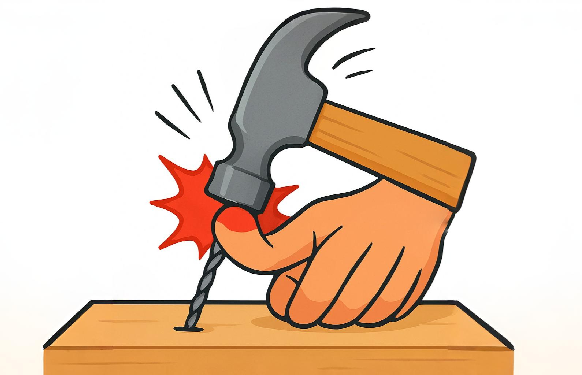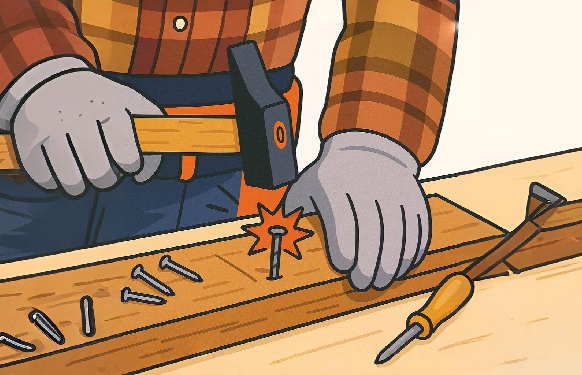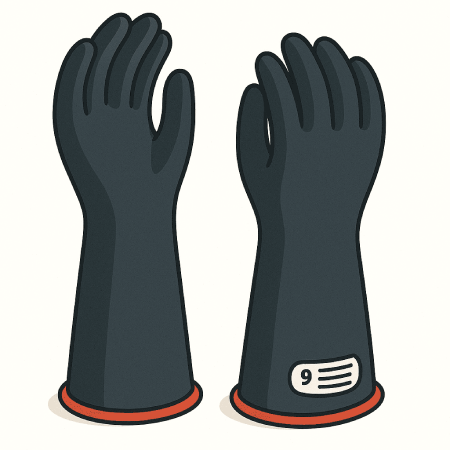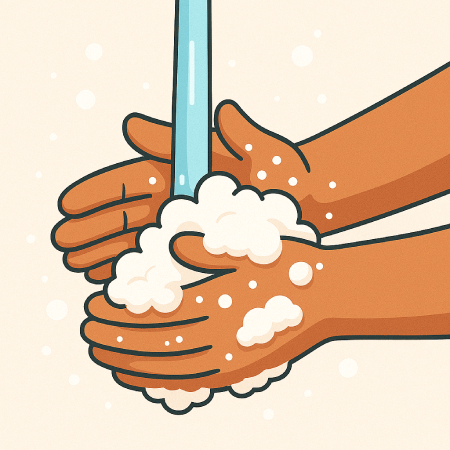Keep an eye peeled to armor your hands; you can’t even peel a banana without your thumb!
The hand is one of the most complex parts of your body- the movement of the tendons, bones, tissues and nerves allow you to grip and do an array of complex jobs. Unfortunately, hand injuries account for approximately 45 percent off all workplace accidents. Over 1 million workplace hand injuries occur each year, some 20 percent of disabling workplace injuries involve the hands. Of those injuries, 63 percent are lacerations, 13 percent are crush injuries and the remaining injuries are punctures, fractures, burns and amputations. It is estimated that at least 60 percent of hand injuries could be avoided with the proper hand protection. Most hand injuries could be prevented by conducting a hazard analysis of all operations that could contribute to hand injuries, engineering out hazards whenever possible, reviewing job tasks and work practices, educating employees about hand hazards, reviewing and choosing appropriate personal protective equipments and engaging employees in the hand protection program to ensure compliance.


OSHA states:
General requirements: “Employers shall select and require employees to use appropriate hand protection when employees’ hands are exposed to hazards such as those from skin absorption of harmful substances; severe cuts or lacerations; severe abrasions; punctures; chemical burns; thermal burns; and harmful temperature extremes”.
Hazards
In the pavilion of hazards allied with hands on work, skin absorption of harmful substances, severe cuts or lacerations, abrasions, punctures, chemical burns, thermal burns, harmful temperature extremes, bee stings, insect bites, contact with blood-borne pathogens, crushing between rotating equipment’s, drawing-in inside pinch points of machineries and exposure to vibrations are in the leading edge of the hand injuries.
Cognizance of Hazards and Prevention Ploys
On the matter of course, when you work-around with hand-held tools such as screw drivers, knives, hammers, hand saws, chisels, wrenches, etc., select the right tool in appropriate size, not damaged or splintered or mushroom headed, and never abuse or misuse the tool. While working with portable power tools, remove your jewelry and keep sleeves buttoned, secure the work on a bench, put the safety guards on, ground the power tool, and disconnect power when not in use or changing the accessories and wear anti-vibration gloves. While using shop tools and bench machineries, never remove guards, use vice grips, and maintain proper clearances on tool rest and tongue guards. Use tongs for handling materials at high temperature, gloves to handle hot or cold parts and equipment’s. During equipment handling, use tag lines, inspect hooks and chain slings before use, never place your hands on top of the load or between the load or on a fixed object nearby and never forget to wear leather gloves. Never dispose metal scraps or sharps in regular trash cans, but dispose in a specific metal can.
Hand Gloves

A cotton glove is passably adequate for light duty material handling and cleanup work. For equipment handling, general construction, heavy cleanup, welding, moderately hot or cold material handling a leather glove is sufficient. In parallel, while operating rotary hammers and other vibrating equipment use the shock absorbing gloves. While working with sheet metal, glass, or heavy cutting use Kevlar or Wire mesh gloves. Chemical gloves such as Natural rubber or Latex gloves (Acids and Caustics), Butyl Rubber gloves (Aldehydes, Ketones, and Esters), Neoprene gloves (Solvents, Acids, Caustics, and Alcohols), PVC or Polyvinyl Chloride gloves (Acids but not solvents), and PVA or Polyvinyl Acetate gloves (Aliphatics, Aromatics, Chlorinated solvents, Esters and Ketones) must be worn while using the specific chemical, whereas Insulated gloves should be used while working with extreme high and low temperatures.
Hand Care and First-Aid
A cotton glove is passably adequate for light duty material handling and cleanup work. For equipment handling, general construction, heavy cleanup, welding, moderately hot or cold material handling a leather glove is sufficient. In parallel, while operating rotary hammers and other vibrating equipment use the shock absorbing gloves. While working with sheet metal, glass, or heavy cutting use Kevlar or Wire mesh gloves. Chemical gloves such as Natural rubber or Latex gloves (Acids and Caustics), Butyl Rubber gloves (Aldehydes, Ketones, and Esters), Neoprene gloves (Solvents, Acids, Caustics, and Alcohols), PVC or Polyvinyl Chloride gloves (Acids but not solvents), and PVA or Polyvinyl Acetate gloves (Aliphatics, Aromatics, Chlorinated solvents, Esters and Ketones) must be worn while using the specific chemical, whereas Insulated gloves should be used while working with extreme high and low temperatures. You need to clean a small cut with a soap and warm water and cover with a sterile bandage.

Treat the burns by immersing in cool water or run cool water over the burned area. If it is a chemical burn rinse with running water for at least 15 minutes. For heat burns, soak minor burns in cold water, then apply a sterile bandage but a burn that is charred or blisters requires medical attention. On sprains, apply cold compresses to reduce pain and swelling. For broken bones, keep the hand still and get professional medical help.
Where Danger Lingers!
Watch Your Fingers!
Ananth Tamilmaniarasu
HSE Trainer,
Green World Group,
Dubai
For More Details Contact:

Good and I like it…
Thanks for visiting us..